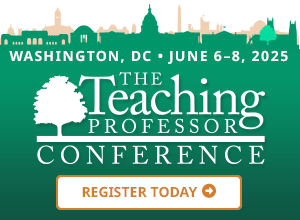“The faculty of voluntarily bringing back a wandering attention, over and over again, is the very root of judgment, character, and will. No one is master of himself if he have it not. An education which should improve this faculty would be the education par excellence. But it is easier to define this ideal than to give practical directions for bringing it about.”
William James, (1842 – 1910)
Psychologist, Philosopher
Looking out at our students in classrooms today, with their texting, Facebook updates, Instagram messages, e-mail checking, Google searches, and tweeting, it’s hard to imagine what was so distracting for college students more than 100 years ago when James made this statement. Yet, even then, he recognized the propensity of the mind to constantly seek novel material, to leap from thought to image to belief to fear to desire to judgment and back again — all following one’s own quirky train of thought resembling the chaotic movements of a swarm of bees around a hive. Time passes through a warped dimension when the student finally returns to some semblance of attention, unaware of all the cognitive detours taken between points A and B. And that’s just the internal process, prompted by nothing in particular. How much more distraction is invited by today’s mobile technology?


